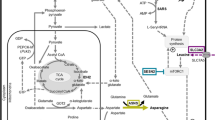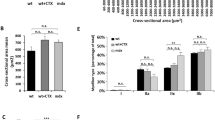Abstract
Adeno-associated viral (AAV) vectors have been broadly used for gene transfer in vivo for various applications. However, AAV precludes the use of most of the original large-sized tissue-specific promoters for expression of transgenes. Efforts are made to develop highly compact, active and yet tissue-specific promoters for use in AAV vectors. In this study, we further abbreviated the muscle creatine kinase (MCK) promoter by ligating a double or triple tandem of MCK enhancer (206-bp) to its 87-bp basal promoter, generating the dMCK (509-bp) and tMCK (720-bp) promoters. The dMCK promoter is shorter but stronger than some previously developed MCK-based promoters such as the enh358MCK (584-bp) and CK6 (589-bp) in vitro in C2C12 myotubes and in vivo in skeletal muscles. The tMCK promoter is the strongest that we tested here, more active than the promiscuous cytomegalovirus (CMV) promoter. Furthermore, both the dMCK and tMCK promoters are essentially inactive in nonmuscle cell lines as well as in the mouse liver (>200-fold weaker than the CMV promoter). The dMCK promoter was further tested in a few lines of transgenic mice. Expression of LacZ or minidystrophin gene was detected in skeletal muscles throughout the body, but was weak in the diaphragm, and undetectable in the heart and other tissues. Similar to other miniature MCK promoters, the dMCK promoter also shows preference for fast-twitch myofibers. As a result, we further examined a short, synthetic muscle promoter C5-12 (312-bp). It is active in both skeletal and cardiac muscles but lacks apparent preference on myofiber types. Combination of a MCK enhancer to promoter C5-12 has increased its strength in muscle by two- to threefold. The above-mentioned compact muscle-specific promoters are well suited for AAV vectors in muscle-directed gene therapy studies.
This is a preview of subscription content, access via your institution
Access options
Subscribe to this journal
Receive 12 print issues and online access
$259.00 per year
only $21.58 per issue
Buy this article
- Purchase on Springer Link
- Instant access to full article PDF
Prices may be subject to local taxes which are calculated during checkout







Similar content being viewed by others
References
Koenig M, Hoffman EP, Bertelson CJ, Monaco AP, Feener C, Kunkel LM . Complete cloning of the Duchenne muscular dystrophy (DMD) cDNA and preliminary genomic organization of the DMD gene in normal and affected individuals. Cell 1987; 50: 509–517.
Deconinck N, Ragot T, Marechal G, Perricaudet M, Gillis JM . Functional protection of dystrophic mouse (mdx) muscles after adenovirus-mediated transfer of a dystrophin minigene. Proc Natl Acad Sci USA 1996; 93: 3570–3574.
Chamberlain JS . Gene therapy of muscular dystrophy. Hum Mol Genet 2002; 11: 2355–2362.
Harper SQ, Hauser MA, DelloRusso C, Duan D, Crawford RW, Phelps SF et al. Modular flexibility of dystrophin: implications for gene therapy of Duchenne muscular dystrophy. Nat Med 2002; 8: 253–261.
Sakamoto M, Yuasa K, Yoshimura M, Yokota T, Ikemoto T, Suzuki M et al. Micro-dystrophin cDNA ameliorates dystrophic phenotypes when introduced into mdx mice as a transgene. Biochem Biophys Res Commun 2002; 293: 1265–1272.
Hartigan-O'Connor D, Kirk CJ, Crawford R, Mule JJ, Chamberlain JS . Immune evasion by muscle-specific gene expression in dystrophic muscle. Mol Ther 2001; 4: 525–533.
Yuasa K, Sakamoto M, Miyagoe-Suzuki Y, Tanouchi A, Yamamoto H, Li J et al. Adeno-associated virus vector-mediated gene transfer into dystrophin-deficient skeletal muscles evokes enhanced immune response against the transgene product. Gene Therapy 2002; 9: 1576–1588.
Harms JS, Splitter GA . Interferon-gamma inhibits transgene expression driven by SV40 or CMV promoters but augments expression driven by the mammalian MHC I promoter. Hum Gene Ther 1995; 6: 1291–1297.
Shield MA, Haugen HS, Clegg CH, Hauschka SD . E-box sites and a proximal regulatory region of the muscle creatine kinase gene differentially regulate expression in diverse skeletal muscles and cardiac muscle of transgenic mice. Mol Cell Biol 1996; 16: 5058–5068.
Donoviel DB, Shield MA, Buskin JN, Haugen HS, Clegg CH, Hauschka SD . Analysis of muscle creatine kinase gene regulatory elements in skeletal and cardiac muscles of transgenic mice. Mol Cell Biol 1996; 16: 1649–1658.
Larochelle N, Oualikene W, Dunant P, Massie B, Karpati G, Nalbantoglu J et al. The short MCK1350 promoter/enhancer allows for sufficient dystrophin expression in skeletal muscles of mdx mice. Biochem Biophys Res Commun 2002; 292: 626–631.
Weeratna RD, Wu T, Efler SM, Zhang L, Davis HL . Designing gene therapy vectors: avoiding immune responses by using tissue-specific promoters. Gene Therapy 2001; 8: 1872–1878.
Dunant P, Larochelle N, Thirion C, Stucka R, Ursu D, Petrof BJ et al. Expression of dystrophin driven by the 1.35-kb MCK promoter ameliorates muscular dystrophy in fast, but not in slow muscles of transgenic mdx mice. Mol Ther 2003; 8: 80–89.
Scott JM, Li S, Harper SQ, Welikson R, Bourque D, DelloRusso C et al. Viral vectors for gene transfer of micro-, mini-, or full-length dystrophin. Neuromuscul Disord 2002; 12 (Suppl 1): S23–S29.
Wang B, Li J, Xiao X . Adeno-associated virus vector carrying human minidystrophin genes effectively ameliorates muscular dystrophy in mdx mouse model. Proc Natl Acad Sci USA 2000; 97: 13714–13719.
Watchko J, O'Day T, Wang B, Zhou L, Tang Y, Li J et al. Adeno-associated virus vector-mediated minidystrophin gene therapy improves dystrophic muscle contractile function in mdx mice. Hum Gene Ther 2002; 13: 1451–1460.
Takeshita F, Takase K, Tozuka M, Saha S, Okuda K, Ishii N et al. Muscle creatine kinase/SV40 hybrid promoter for muscle-targeted long-term transgene expression. Int J Mol Med 2007; 19: 309–315.
Wang JM, Hou J, Qiu XF, Kurachi K, Xue JL . Hybrid retroviral vector with MCK enhancers inserted in LTR for stable and specific expression of human factor IX in skeletal muscle. Chin Med J 2004; 117: 893–898.
Nguyen QG, Buskin JN, Himeda CL, Fabre-Suver C, Hauschka SD . Transgenic and tissue culture analyses of the muscle creatine kinase enhancer Trex control element in skeletal and cardiac muscle indicate differences in gene expression between muscle types. Transgenic Res 2003; 12: 337–349.
Chamberlain JS, Jaynes JB, Hauschka SD . Regulation of creatine kinase induction in differentiating mouse myoblasts. Mol Cell Biol 1985; 5: 484–492.
Jaynes JB, Chamberlain JS, Buskin JN, Johnson JE, Hauschka SD . Transcriptional regulation of the muscle creatine kinase gene and regulated expression in transfected mouse myoblasts. Mol Cell Biol 1986; 6: 2855–2864.
Buskin JN, Hauschka SD . Identification of a myocyte nuclear factor that binds to the muscle-specific enhancer of the mouse muscle creatine kinase gene. Mol Cell Biol 1989; 9: 2627–2640.
Ritchie ME . Human B creatine kinase gene expression in C2C12 cells is regulated by protein interactions involving the first exon. Biochem Biophys Res Commun 1996; 223: 762–769.
Jaynes JB, Johnson JE, Buskin JN, Gartside CL, Hauschka SD . The muscle creatine kinase gene is regulated by multiple upstream elements, including a muscle-specific enhancer. Mol Cell Biol 1988; 8: 62–70.
Hauser MA, Robinson A, Hartigan-O'Connor D, Williams-Gregory DA, Buskin JN, Apone S et al. Analysis of muscle creatine kinase regulatory elements in recombinant adenoviral vectors. Mol Ther 2000; 2: 16–25.
Amacher SL, Buskin JN, Hauschka SD . Multiple regulatory elements contribute differentially to muscle creatine kinase enhancer activity in skeletal and cardiac muscle. Mol Cell Biol 1993; 13: 2753–2764.
Salva MZ, Himeda CL, Tai PW, Nishiuchi E, Gregorevic P, Allen JM et al. Design of tissue-specific regulatory cassettes for high-level rAAV-mediated expression in skeletal and cardiac muscle. Mol Ther 2007; 15: 320–329.
Zhang Y, Chirmule N, Gao G, Wilson J . CD40 ligand-dependent activation of cytotoxic T lymphocytes by adeno-associated virus vectors in vivo: role of immature dendritic cells. J Virol 2000; 74: 8003–8010.
Draghia-Akli R, Fiorotto ML, Hill LA, Malone PB, Deaver DR, Schwartz RJ . Myogenic expression of an injectable protease-resistant growth hormone-releasing hormone augments long-term growth in pigs. Nat Biotechnol 1999; 17: 1179–1183.
Liu YL, Mingozzi F, Rodriguez-Colon SM, Joseph S, Dobrzynski E, Suzuki T et al. Therapeutic levels of factor IX expression using a muscle-specific promoter and adeno-associated virus serotype 1 vector. Hum Gene Ther 2004; 15: 783–792.
Hagstrom JN, Couto LB, Scallan C, Burton M, McCleland ML, Fields PA et al. Improved muscle-derived expression of human coagulation factor IX from a skeletal actin/CMV hybrid enhancer/promoter. Blood 2000; 95: 2536–2542.
Li J, Dressman D, Tsao YP, Sakamoto A, Hoffman EP, Xiao X . rAAV vector-mediated sarcogylcan gene transfer in a hamster model for limb girdle muscular dystrophy. Gene Therapy 1999; 6: 74–82.
Zhu T, Zhou L, Mori S, Wang Z, McTiernan CF, Qiao C et al. Sustained whole-body functional rescue in congestive heart failure and muscular dystrophy hamsters by systemic gene transfer. Circulation 2005; 112: 2650–2659.
Loser P, Jennings GS, Strauss M, Sandig V . Reactivation of the previously silenced cytomegalovirus major immediate-early promoter in the mouse liver: involvement of NFkappaB. J Virol 1998; 72: 180–190.
Trask RV, Strauss AW, Billadello JJ . Developmental regulation and tissue-specific expression of the human muscle creatine kinase gene. J Biol Chem 1988; 263: 17142–17149.
Yang WL, Lim RW . Modulation of muscle creatine kinase promoter activity by the inducible orphan nuclear receptor TIS1. Biochem J 1997; 321 (Part 2): 281–287.
Cordier L, Hack AA, Scott MO, Barton-Davis ER, Gao G, Wilson JM et al. Rescue of skeletal muscles of gamma-sarcoglycan-deficient mice with adeno-associated virus-mediated gene transfer. Mol Ther 2000; 1: 119–129.
Chen CY, Schwartz RJ . Identification of novel DNA binding targets and regulatory domains of a murine tinman homeodomain factor, nkx-2.5. J Biol Chem 1995; 270: 15628–15633.
Lints TJ, Parsons LM, Hartley L, Lyons I, Harvey RP . Nkx-2.5: a novel murine homeobox gene expressed in early heart progenitor cells and their myogenic descendants. Development 1993; 119: 419–431.
Abmayr S, Gregorevic P, Allen JM, Chamberlain JS . Phenotypic improvement of dystrophic muscles by rAAV/microdystrophin vectors is augmented by Igf1 codelivery. Mol Ther 2005; 12: 441–450.
Xiao X, Li J, Samulski RJ . Production of high-titer recombinant adeno-associated virus vectors in the absence of helper adenovirus. J Virol 1998; 72: 2224–2232.
Qiao C, Wang B, Zhu X, Li J, Xiao X . A novel gene expression control system and its use in stable, high-titer 293 cell-based adeno-associated virus packaging cell lines. J Virol 2002; 76: 13015–13027.
Qiao C, Li J, Skold A, Zhang X, Xiao X . Feasibility of generating adeno-associated virus packaging cell lines containing inducible adenovirus helper genes. J Virol 2002; 76: 1904–1913.
Walsh A, Ito Y, Breslow JL . High levels of human apolipoprotein A-I in transgenic mice result in increased plasma levels of small high density lipoprotein (HDL) particles comparable to human HDL3. J Biol Chem 1989; 264: 6488–6494.
Xiao X, Li J, Samulski RJ . Efficient long-term gene transfer into muscle tissue of immunocompetent mice by adeno-associated virus vector. J Virol 1996; 70: 8098–8108.
Acknowledgements
This work was supported by grants to Xiao Xiao from the National Institutes of Health (NIH) and the Muscular Dystrophy Association (MDA), and the scholarships to Bing Wang from the Duchenne Muscular Dystrophin Research Center (DMDRC) and Center for Cell Therapeutics (CCT), University of Pittsburgh. We would like to thank Jim Cummins and Melessa Salay for editorial assistance.
Author information
Authors and Affiliations
Corresponding author
Rights and permissions
About this article
Cite this article
Wang, B., Li, J., Fu, F. et al. Construction and analysis of compact muscle-specific promoters for AAV vectors. Gene Ther 15, 1489–1499 (2008). https://doi.org/10.1038/gt.2008.104
Received:
Revised:
Accepted:
Published:
Issue Date:
DOI: https://doi.org/10.1038/gt.2008.104
Keywords
This article is cited by
-
Therapeutic potential of highly functional codon-optimized microutrophin for muscle-specific expression
Scientific Reports (2022)
-
Resistance Exercise Increases the Regulation of Skeletal Muscle FSTL1 Consequently Improving Cardiac Angiogenesis in Rats with Myocardial Infarctions
Journal of Science in Sport and Exercise (2019)
-
The exerkine apelin reverses age-associated sarcopenia
Nature Medicine (2018)
-
Adeno-Associated Virus (AAV) as a Vector for Gene Therapy
BioDrugs (2017)
-
Prevention of Muscle Wasting by CRISPR/Cas9-mediated Disruption of Myostatin In Vivo
Molecular Therapy (2016)



